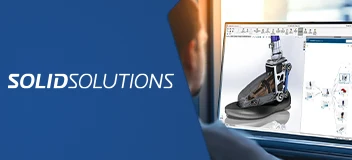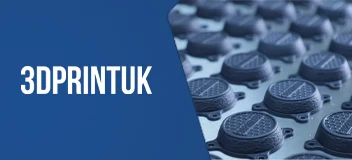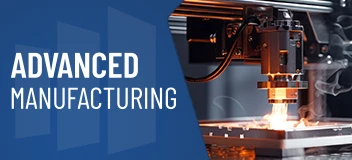What is Finite Element Analysis Used For? Unlocking the Power of FEA in Engineering Solutions
Finite Element Analysis (FEA) is the silent powerhouse that fuels innovation in engineering. This technique allows engineers to simulate and analyze complex structures, materials, and designs.
In this blog, we’ll discuss the significance of FEA, exploring what it is, why it matters, and how your company can strategically employ analysis to revolutionize your engineering projects.
What is Finite Element Analysis?
Finite Element Analysis is a numerical technique used to simulate complex physical phenomena by dividing them into smaller, more manageable elements. These elements are analyzed for their individual behaviors, combined to provide a complete picture of the overall system.
FEA is widely used in fields such as mechanical, civil, and aerospace engineering. It aids in the design of everything from bridges to aircraft.
Why is FEA Important?
Design Optimization
FEA allows engineers to solve complex engineering problems and optimize designs by predicting how structures or components will behave under various conditions. This aids in refining designs for enhanced performance and durability. The technique also helps identify potential points of failure in a design before it is manufactured, allowing for preemptive adjustments and improvements.
Cost and Time Efficiency
By virtually testing prototypes, FEA reduces the need for physical prototypes, saving both time and costs in the product development cycle. As a result, products can be brought to market more quickly.
Material Selection
Engineers can analyze the impact of different materials on a design, aiding in the selection of the most suitable materials for a specific application before spending on physical prototypes.
Extreme Conditions Testing
Finite element analysis allows for testing under various scenarios. This includes extreme conditions that may not be practical to recreate in real life.

Simulation FEA services
What is the process of FEA?
- Typical finite element analysis process begins with the creation of a geometric model of the object. This model represents the physical structure in a digital format.
- Next, the model is divided into smaller, manageable pieces called elements. This step is known as meshing. Each element is connected at points called nodes.
- After meshing, material properties are assigned to each element. These properties define how the material behaves under stress.
- Then, boundary conditions and loads are applied to simulate real-world conditions. The FEA software solves complex equations that describe the behavior of the entire structure.
- Finally, the results are analyzed. Engineers review the stress, strain, and displacement of the elements. This information helps in assessing the performance and safety of the design.
How We Utilize FEA to Benefit You?
At TriMech, we understand the significance of analysis in ensuring the success of engineering projects. Here’s how our expertise can add value to your endeavors, as well as a few more specific use cases:
Customized Solutions
Our team of skilled engineers specializes in tailoring simulations to address the unique challenges of your projects, ensuring that the results align with your specific requirements.
Optimized Designs
We utilize analysis to optimize your designs, enhancing performance, reliability, and efficiency. This leads to more robust solutions that stand up to real-world conditions.
Risk Mitigation
By conducting thorough analyses, we identify and mitigate potential risks early in the design process, reducing the likelihood of unexpected issues during implementation.
Use Case 1 – Renewable Energy
Clients involved in renewable energy projects, such as wind energy, can benefit from FEA for analyzing wind turbine blade designs. The simulation can assess the structural integrity of the blades under various wind conditions, aiding in the development of more efficient and durable wind turbine systems.
Use Case 2 – Electronics
Analysis can assist clients in the electronics industry by simulating thermal management solutions for electronic components. This includes predicting and optimizing heat dissipation in circuit boards or electronic devices, ensuring they operate within safe temperature ranges for extended lifespans.
Ready to Transform Your Engineering Solutions?
Harnessing the power of Finite Element Analysis is not just an advantage; it’s a necessity. We are committed to delivering innovative and reliable engineering solutions through the strategic application of FEA.
Contact us today to explore how our expertise can elevate your projects to new heights.
Have a Product Idea?
Discover our product development services tailored to startups, small manufacturers, and inventors.
Design Newsletter
Get the latest news curated for designers, makers and inventors.
Product Design Experts related to this content:
Discover our team of designers, engineers, project managers, and problem-solvers.
Chris Panosh, Manager, Engineering Services
Chris Panosh is based out of Charlottesville Virginia. Chris has a B.S. in Mechanical Engineering from North Carolina State University.
More from our Blog
Top Prototyping Tips for your Invention or Product Idea
Check out our recent prototyping tips from the TriMech Design Solutions team that are perfect for your invention or new product idea!
Starting Prototype Design
Understand these quick and key fundamental about starting prototype design process and selecting a prototype design company.
How to Create an Invention (9-Step Guide)
Want to know how to create an invention? These are the nine steps inventors should follow to successfully bring an invention idea to life.
Need help with your Product Idea?
Tell us about your invention or product design idea and get the help you need design, build and bring it to market

















